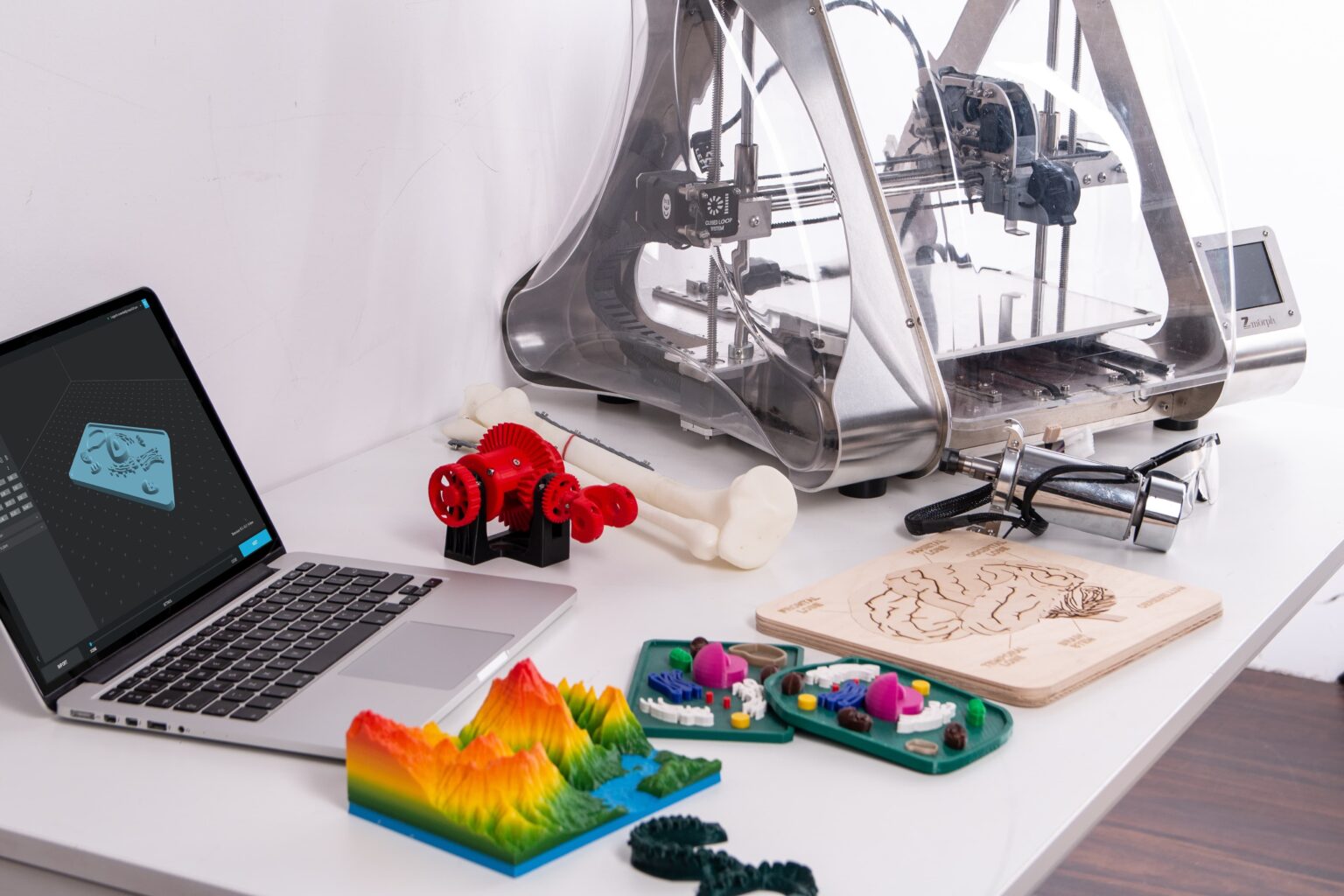While the development of complex technologies takes time, it’s evident that the scope and depth of 3D technology continues to expand.
3D printing has been much vaunted in recent years. As the dust settles on the hype surrounding the emerging technology, 150sec looks at a number of encouraging aspects of the technology European startups are working on which should propel the industry forward in 2020.
1. CARBON FIBRE & SILICONE PRINTING
Whilst 3D printing is commonly associated with simple plastic products, there are in fact a variety of printing materials available today. 3D printing using carbon fibre enables use cases that demand extremely lightweight yet strong parts. Carbon fibre is stronger than steel yet it’s five times lighter.
The issue with carbon fibre composite printing has been one of cost. In this sphere, Zurich’s 9T Labs is setting itself apart. The Swiss startup has brought together the technology to make high volume carbon fibre composite printing more affordable.
Swiss innovation is clearly at the forefront when it comes to development in the sector. Just like 9T Labs, another Swiss 3D printing spin off has emerged from ETH Zurich in the form of Spectroplast. It specialises in silicone 3D printing. The company’s vision is to bring industrial-scale silicone 3D printing to the mass market. Conventional systems involve silicone components fabricated by injection moulding that is lengthy and expensive. The startup claims that its technology allows for mass customisation
2. ADDITIVE MANUFACTURING
3D printing typically creates products by adding materials layer by layer. This is commonly known as additive manufacturing.
Belgium’s Aerosint is working towards improving the additive manufacturing process. The startup claims its technology facilitates multi-material 3D printing,making it scalable and more cost effective. Its selective powder deposition (SPD) process improves upon existing approaches by allowing for the printing of parts that contain two or more materials.
Another startup, Paderborn-based AMendate, sets itself apart through through its software. The firm produces specialist topology optimisation software for additive manufacturing. Through such optimisation, the customer has a directly printable part design specifically adapted to additive manufacturing.
Swiss company Sintratec is also contributing to additive manufacturing. It provides complete systems and materials to enable the process.
3. 3D PRINTED GLASS
3D printing in its original application implicated the use of polymers. However, as the space continues to innovate, more challenging applications of the technology are being tackled. That is true in the case of Glassomer – which specialises in the 3D printing of glass.
Glassomer is a spin-off from the University of Freiburg’s NeptunLab.The firm fabricates fused silica glass components from prototyping through to small series production. It is the first to develop a process to 3D print transparent glass. Furthermore, the solution can be effected using existing stereolithography (STL) printers, negating the need for customers to buy a specialised 3D printer.
Glassomer’s technology involves a silica nanocomposite which is in liquid form when it comes to 3D printing. The company claims that their customised glass parts are indistinguishable from commercially fused silica glass. The product retains the same optical transparency, mechanical strength, chemical and thermal stability.
4. BIOPRINTING
3D printing doesn’t just involve plastics and metals. Cellbricks is a biotechnology startup headquartered in Berlin. The firm has developed a new Bioprinting technology which facilitates the creation of complex 3D structures made from biological material. Its product is used in biomedical research and tissue engineering. The overarching goal of its product offering is to help improve human health by making synthetic organs a reality.
The emergence of 3D printing over the last years has received a lot of attention across industry sectors. As the hype settles down, it becomes clear that the development of complex technologies takes time.
Yet considering the wealth of European startups present in the 3D printing sector, it’s evident that the scope and depth of the technology continues to expand. This should make for a progressive and ever-developing market sector in Europe over the coming year.
5. 3D PRINTING IN THE MEDICAL FIELD
3D printing has many functions in a variety of industries, however, in the medical field it has four main applications. Allie Nawrat found out how this technology could be used to replace human organ transplants, speed up surgical procedures, produce cheaper versions of required surgical tools, and improve the lives of those reliant on prosthetic limbs.
t has been forecast that 3D printing in the medical field will be worth $3.5bn by 2025, compared to $713.3m in 2016. The industry’s compound annual growth rate is supposed to reach 17.7% between 2017 and 2025.
There are four core uses of 3D printing in the medical field that are associated with recent innovations: creating tissues and organoids, surgical tools, patient-specific surgical models and custom-made prosthetics.
One of the many types of 3D printing that is used in the medical device field is bioprinting. Rather than printing using plastic or metal, bioprinters use a computer-guided pipette to layer living cells, referred to as bio-ink, on top of one another to create artificial living tissue in a laboratory.
These tissue constructs or organoids can be used for medical research as they mimic organs on a miniature scale. They are also being trialled as cheaper alternatives to human organ transplants
https://www.entrepreneur.com/article/345339
https://www.medicaldevice-network.com/features/3d-printing-in-the-medical-field-applications/







